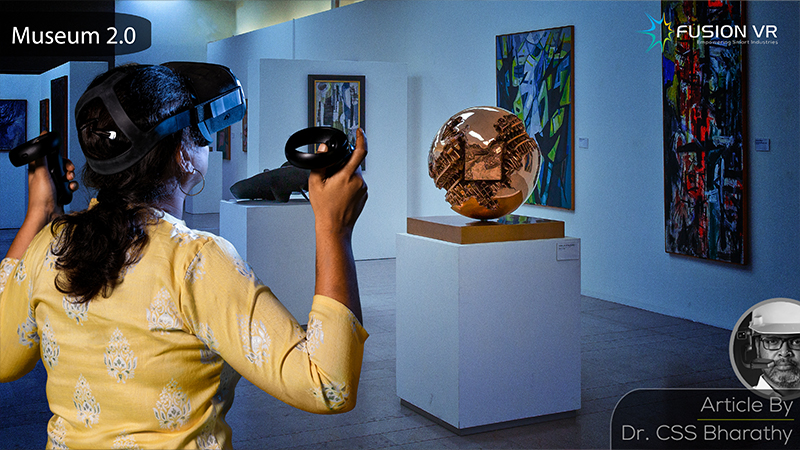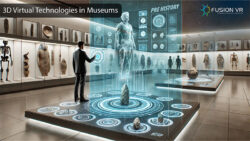It is still believed that some people are left-brained while others are right-brained. This is to refer to the influence of each side of their brain on their dominant characteristics. It is widely accepted that the left side of the brain influences logical and rational thinking, thereby providing the aptitude for mathematics, science and technology. The right brain, in contrast, is strong in creativity enabling people to be good in artistic and cultural pursuits.
Museums are great repositories of cultural treasures from all over the world. To enable greater appreciation and deliver inspiration to the coming generations, we are using technology. It is essential that people who are strong in both areas, the right and left-brained people, collaborate and deliver. Technology is deployed to develop and deliver interactive and engaging visitor experiences and share and communicate those experiences with others using social media.
Of the many technologies available, augmented reality and virtual reality generate the most excitement for applications in a museum setting. These technologies are also playing a key role in the transformation of traditional museums into digital museums.
Virtual reality technology helps museums create highly interactive and immersive VR museum experiences. Developing virtual reality exhibits and experiences is a collaborative effort involving museum professionals, VR technology experts, engineers, developers, content creators etc.
In other words, the use of virtual reality in museums can be seen as a cool collaboration of the left brain and right brain strong people. A remarkable phenomenon in the 21st century is how our lives are entwined with digital technologies. Mobile phones are ubiquitous now and are required for almost everything.
Virtual reality headsets have become more accessible and affordable thanks to the developments in the gaming world. This has enabled many developers to create applications for various use cases. Virtual reality has been deployed for many exciting exhibits to make more interactive museums.
VR headsets allow a user to peek into an environment that was once several centuries ago, enabling time travel for its visitors. What was the Chola or Maurya kingdom like, and how would it feel to walk in the streets at that time? This is recreated with VR, which provides complete immersive cultural experiences that are truly magical.
Virtual reality tours of world-famous museums are now possible from the comfort of your own home, school or office. This has provided many people with the opportunity to visit virtually but obtain a highly realistic experience of visiting the place. The use of highly advanced technologies in museums to deliver virtual reality museum experiences enables a wide spectrum of people to enjoy and appreciate their cultures and values.
Truth be told, the gap between technology and culture is actually fast disappearing. Technology is an enabler for sharing cultural experiences and ensuring a better appreciation of the diversity of cultures across the globe. The growth of mobile technology, devices and the leaps in connectivity has made possible the appreciation we see.
Virtual reality is a key technology for the metaverse, which will enable greater mobility in enjoying cultural experiences and the use of blockchain technology for preserving cultural treasures of the world that are in existence or under creation. Today’s digital generation is more geared toward enjoying cultural experiences using technology than the rest of us. They are keen to learn and keep pace with the developments in VR technology.
The advent of Museum 2.0 is championed by Fusion VR, and I encourage you to explore our webpage to learn more about it, our VR experience centres, corporate experience centres and digital museum projects till date and the various services we offer. This would help further close any perceived or actual gap between technology and culture in the world of museums.





